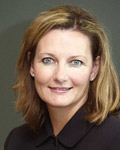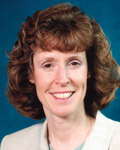 |
 |
 |
Marketing Success driven by technology By Dave Willis “Been there. Done that.” Ask any of this year’s AMS Users’ Group Automation Excellence Award finalists about something technology related, and you’ll probably get that response. Through the years, information technology (IT) leaders at these respected agencies have zeroed in on ways to contribute to better agency operations. As they’ve notched technology successes, they’ve learned some lessons—ones they’re more than willing to share with other agencies. Agency creations Take Ryan Deeds, vice president, information technology at Lanier Upshaw, Inc., an Assurex Global partner based in Lakeland, Florida. Development of a resource to bring diverse agency data to the employees’ desktops—a dashboard, if you will—tops his list of accomplishments. His agency’s IT team developed the tool in-house, using ASP.NET. It pulls information from the Sagitta agency management system and other agency databases and provides up-to-the-minute access to reports and other data. “A CSR, for instance, can log into Windows, click a button, enter date ranges, and up pops an Excel document with ex-list information,” he says. Before the platform was created, IT delivered reports monthly to employees at the agency’s three locations or in response to special requests. “Monthly reports often came out when reps had no interest in or opportunity to use them,” Deeds says. Plus, the job was time-consuming. “Our goal was to let folks run the reports themselves,” Deeds adds. The platform also provides audit and other reporting capabilities, supporting better accuracy, workload and procedures management and, ultimately, account retention. Leading Jann McCully’s list of accomplishments is ABD Insurance & Financial Services’ creation of CyberSure, an online, client-facing self-service tool. Now in its 10th year—that’s ancient in Internet years—the tool was developed in-house at the Redwood City, California, firm, when management decided that its Web presence should be more than simple electronic brochure-ware. The trademarked, patented site offers customers—many of whom operate from California’s Silicon Valley—immediate, electronic access to virtually all of their policy information. “We were challenged early on by customers to make paper go away,” says McCully, agency chief information officer. “We took data from our agency management system, Sagitta, and served it up over the Internet.” Clients of any of the agency’s offices from California to Colorado can go in and see complete schedules of their locations, coverages, vehicles, drivers and more, and can print documents, request changes online and download claims information. McCully says ABD created CyberSure years before vendors offered similar products. The agency also accomplished it before most other brokers did, including those much larger than they. “We created it with just a handful of people,” McCully says. Staff quickly got past thinking that CyberSure would eliminate their jobs. “Instead, they saw an opportunity to focus on tasks with greater value,” McCully explains. “They could use the time to build relationships and talk to clients about more meaningful things.” Agency conversions At Moody Insurance Agency, Inc., Patty McQuade speaks proudly of a project that her team completed this spring. “We automated our benefits department,” she says. Over the past dozen years, the department grew from one person to eight. As often happens in such situations, technology didn’t keep pace with the growth. “Benefits has always operated kind of as its own agency,” says McQuade, vice president and chief information officer for the agency, which has locations in Denver and Grand Junction, Colorado. IT staff helped the operation transition from an older, less robust technology to BenefitPoint, a comprehensive management system designed for benefits. Automating benefits is challenging, in part because of the notion many have that its processes can’t be automated. “When you get down to the nuts and bolts, though, a lot of workflows are similar to ones used in P&C,” McQuade says. “For us, a big part of it was learning some new terminology.” Through the process, IT staff helped the benefits staff get rid of their paper files and automate more of their processes. A particular benefits-related challenge involves carriers. “There’s no consistency among benefits carriers,” McQuade says. “On the P&C side we have ACORD,” which drives standards. “In the benefits world, there doesn’t seem to be any such thing.” In Pittsburgh, Allied Insurance Brokers, Inc., went paperless in October 2001. “That was the biggest thing we’d ever done,” says Katrina Hewitt, agency assistant vice presi-dent, client services and marketing. “And it’s the best thing we’ve ever done—getting rid of our paper files and becoming fully automated.” Hewitt says the agency now operates much more efficiently—something IT people consistently cite as a key success factor. “When clients call, we can look at their policy information right then,” she says. “We don’t have to pull a file and call them back.” All paper coming in the door gets digitized and then distributed electronically. “We keep the paper for two days and then shred it,” she adds. Scanning is used for all departments, not just those dealing with policies. Going paperless represented a dramatic change. “The biggest challenge was the need to have paper in hand,” Hewitt says. “The desire to look at paper versus a screen was hard to overcome.” Installing dual monitors on reps’ desks helped early on. Now, most reps use three monitors—one each for their management system, work documents and e-mail. For Cyndy Smith, vice president of technology at Haylor, Freyer & Coon, Inc., an Assurex Global Partner based in Syracuse, New York, satisfaction came when her agency replaced an airplane engine during flight. Not really. It just seemed like it. Actually, the agency switched management systems—during business hours. “Ten years ago we left a system we’d used for 15 years,” she recalls. “We turned it off at noon and turned on the new system at the same time.” It was a complete conversion for the entire agency, which then had nearly 200 users and which now operates 12 offices in New York, Colorado and Virginia. “We didn’t skip a beat,” Smith remembers. “It required a lot of planning and training ahead of time and some post-conversion training. It was difficult because we couldn’t implement it by department, like we have with other projects.” Training on a new system while people are using the old one presented several challenges, particularly since management systems represent the guts of an agency, at least from a processing standpoint. “It’s two different languages,” Smith says. “Tools in one system are called one thing, and you move to the new system and they’re called something else.” Valuing staff and management IT managers who lead such dramatic moves cite several factors in their success. Having strong IT staff, of course, is one. These individuals often make the case for change, formulate plans, drive implementation and handle all of the other details associated with it, including training. As important—even more so, some say—is strong management vision and support. At ABD, McCully says, automation is driven by such vision. Years ago, an agency exec started talking about taking the Web site beyond an “us too” approach. Their goal: provide something of value to clients. The exec told McCully, “We’re a bricks-and-mortar company. I don’t think we’ll sell millions or billions over the Internet, but I’m sure there’s a way to reach out to the clients.” Management backed the vision with financial and other empowerment. Smith finds similar empowerment. “Management is extremely supportive of technology initiatives,” she says. “There’s never been anything I wanted to do that I haven’t been able to.” Deeds knows why his management supports automation. His CEO tells him, “You guys are a real force multiplier for us.” As a result, the company is willing to give IT any resources it needs. Deeds says, “By delivering on key performance indicators we establish a reputation. They have faith in us.” McQuade adds, “I’m blessed to work for an agency with a total commitment to automation. In 1995, they made a decision to use technology to increase revenue.” It helps, she says, to work for a family-owned agency. “I don’t have to go through a lot of layers and months of pleading to get approvals,” she says. “I ask and a decision is made.” Employee involvement and culture Management commitment feeds employee buy-in. “People see manage-ment vision and recognize the value of automation, so they’re more eager to accept and try it,” Hewitt says. Involving office staff early on helps, too. “We show people what we’re trying to do and why,” Hewitt says. “Then we ask what they think.” Deeds’ agency also involves employees. “Whenever we start major IT initiatives, we show staff the options,” he says. “Then we ask which product would be the best fit.” This actually gets staff excited about change, he notes. Smith recommends including supervisors in the mix. “We’ve instilled a culture where managers and supervisors all focus on making sure we’re as effective and efficient as possible,” she says. “They understand technology will help us, at least from an operational perspective. That makes implementation easier.” Knowledge is power Award-winning agencies encourage others looking to ratchet up automation effectiveness to, first, understand the business. “Find out your agency’s primary key indicators and then figure out how IT can start adjusting those,” says Deeds. At his agency, revenue per employee is critical. “We knew the indicator and figured out how automation could maximize it.” McCully says, “We get information first hand by talking with business unit leaders and branch leadership.” By participating in the strategic planning process, ABD’s IT team can see early on the agency’s plans and challenges. “We tailor our IT planning to what they need, even if they don’t know exactly what automation they need,” she adds. Knowing the business often entails going beyond P&C. “I was spending time and energy on commercial and personal lines,” McQuade says. “We were doing great things, but benefits was lagging.” So she focused on learning more about the business, its operations and its needs, and brought them on par with the rest of the agency. Sometimes it means listening to insureds. When ABD first introduced CyberSure, customers could enter data and ask for certificates of insurance to be sent. “A client said during a demo, ‘If I just typed in all this information, couldn’t I just issue the certificate myself?’” McCully says. It didn’t take long for ABD to allow just that. Smith encourages involvement in industry organizations, too. “I’ve been very involved with user groups and industry organizations such as ACT (Agents Council for Technology) and AUGIE (ACORD-User Groups Information Exchange),” she says. Such involvement keeps her on top of tech advances. “We wouldn’t have been an early adopter of real time had I not been,” she notes. “You’re more aware of what’s going on and what the benefits are.” Planning, patience and people Experience teaches the value of planning. Referring to major transitions such as changing management systems, Smith says, “You really need to think long and hard about it first.” Hewitt believes creative planning helps avoid problems. “When we went paperless, we decided to let people keep the paper for 30 days along with the images,” she says. “Then we took the paper away.” Once people got used to seeing on-screen documents—with paper nearby for security—they quickly changed their ways and abandoned the paper. Patience also helps—in advance of projects and during. For instance, Smith says, “Sometimes I’ll introduce a concept to management one year and we’ll discuss it, but I won’t get approval until the next year.” Hewitt advises patience during change, too. “When we went paperless, it took more time in the beginning to scan everything onto the system,” she says. “But the end result was rewarding.” Deeds encourages setting a clear IT focus. “We’ve made a significant shift over the last few years,” he says. “IT used to be network and computer support. It’s much more than that now.” Success is now measured, he says, in how IT helps the agency boost efficiency, increase revenue or meet other objectives. IT leadership also should focus on staff soft skills. “All of my people have great personal skills,” Deeds says. If pressed to choose between a weak tech with a great personality and a terrific one with a horrible personality, he’d probably pick the former. He could at least instill the tech skills. “I believe my staff should leave someone happier than when they got there,” he says. Happy clients—inside and out Successful technology implementation breeds increased staff satisfaction. At Moody, for instance, employees are automation admirers. “Most of them absolutely love all the automation,” McQuade says. “When we hire new people from other agencies, often they’re in awe of what we offer.” She’s also had employees tell her they’ll never leave because the automation can’t be matched elsewhere. In the end, happy customers are the true test. “Management stresses the importance of implementing technology so we will be more efficient for our clients,” Hewitt adds. “It makes us a better agency for them.” *
The author |
|
|||||||||||||||||||||
|
||||||||||||||||||||||





